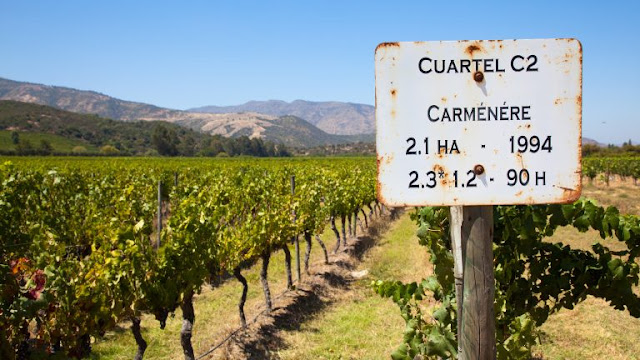Drink Chilean Carménère before you die! Why?
It's the variety that helped put Bordeaux on the wine map and it nearly became extinct!
Once upon a time Carménère was one of the most prevalent varieties in Bordeaux—being used alongside Cabernet Franc to make the fame of the region's best chateaux. However, after the phylloxera epidemic of the late 19th Century more Merlot and a new variety called Cabernet Sauvignon were planted in place of Carménère. This was largely due to Carménère’s susceptibility to the disease coulure and not responding as well to grafting (grafting is what saved the wine industry from phylloxera and is the process of joining European grape vines onto the rootstock of the phylloxera resistant American grape vines).
 |
| Many Carménère vineyards in Chile were once thought to be Merlot |
Consequently, not so long ago, Carménère was on the verge of extinction. Or, at least, that’s what people thought. Until it was discovered Chile was actually awash with the variety. The Chileans at the time didn’t realise … they thought it was a unique clone of Merlot. It wasn’t until a French Ampleographer visited the country in 1994 that he identified this “Chilean Merlot” as Carménère.
This mistaken identification probably saved Carménère from extinction but also gave Chile its flagship grape. Carménère’s naturally low acidity along with its sweet tasting fruit (blackberry and plum) and soft round tannins make it an absolute pleasure to drink. (As long as it’s ripe, under-ripe Carménère can be excessively herbaceous).